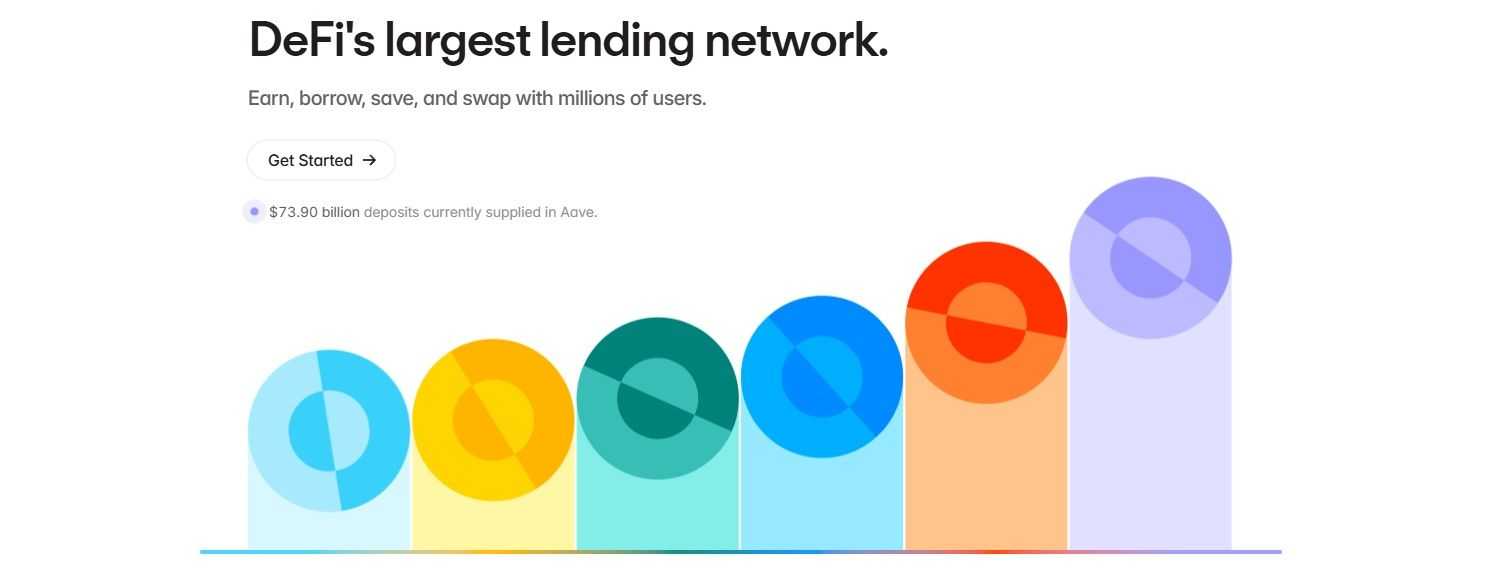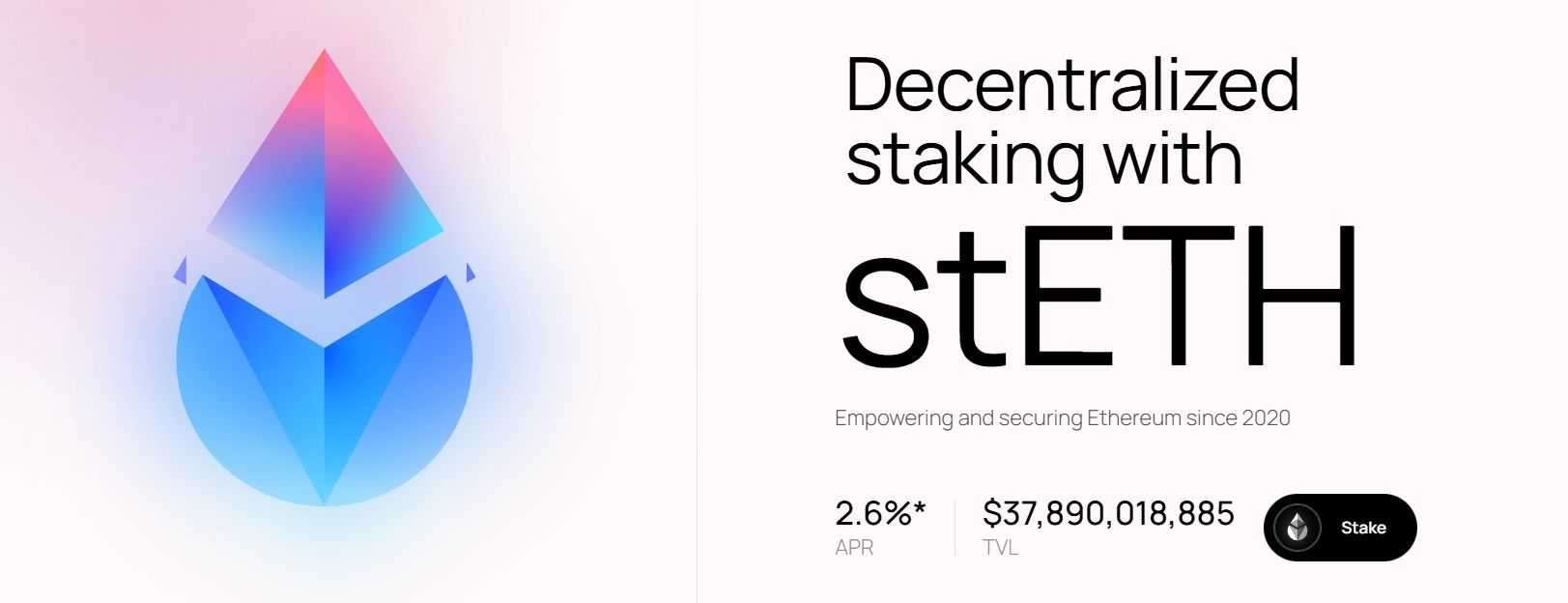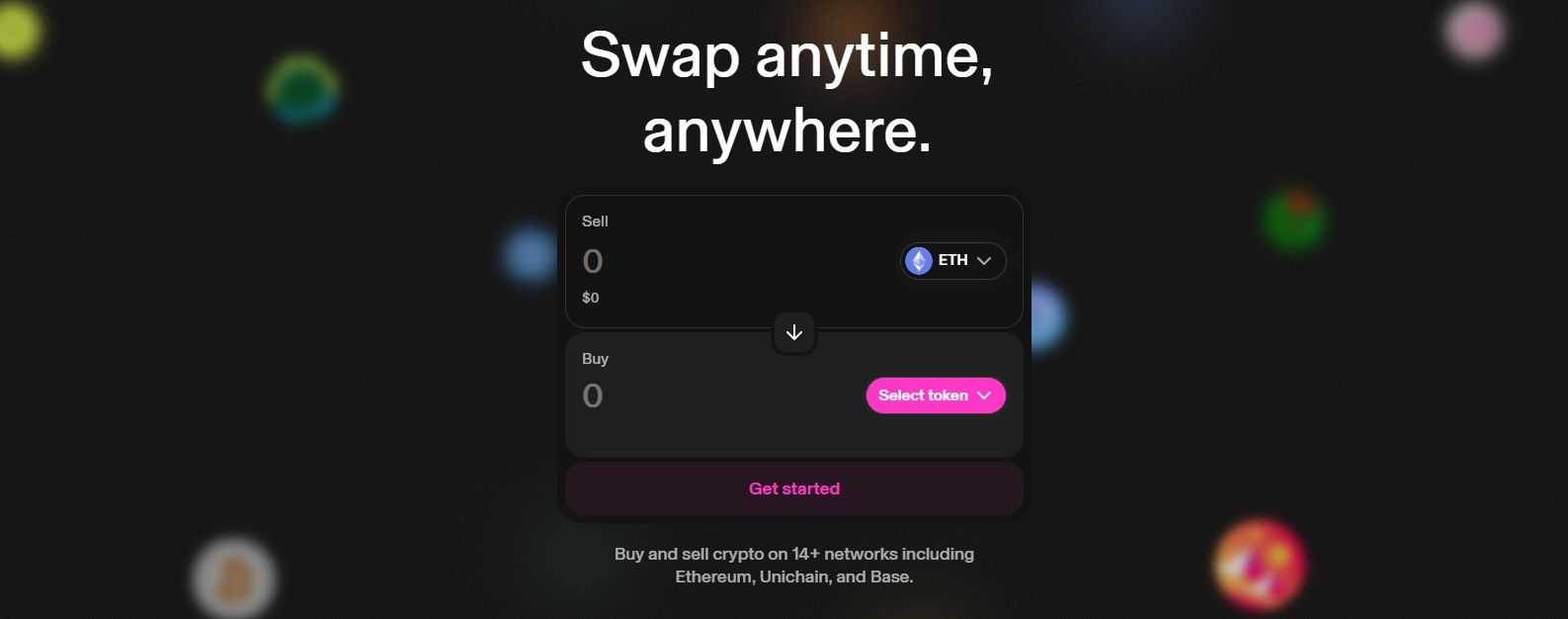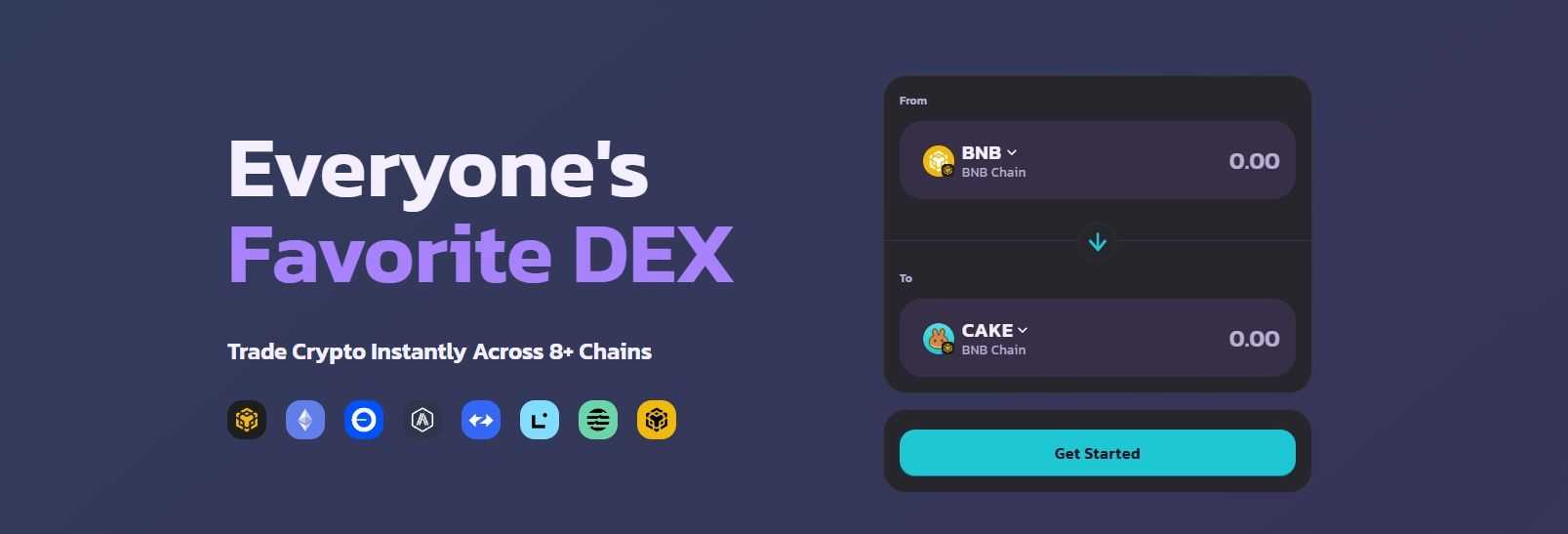Discover The Top DeFi Yield Farming Platforms In 2025
This article was fully updated in October 2025 to reflect the latest DeFi yield farming data, including verified APY ranges, cross-chain platform coverage, and updated risk management frameworks. The guide now includes comparison tables, current TVL figures, and step-by-step safety checks for first-time yield farmers.
DeFi yield can feel like walking into a bustling market without a map. Prices flash, tokens tempt, and every stall promises a bargain.
This guide gives you the map. We start with clear definitions, then show how yield is actually produced and what can go wrong. You will get a quick selection framework, ranked platform cards, side-by-side comparisons, and practical checklists for a safe first deposit. Beginners can follow the steps end-to-end. Experts will find data windows, strategy ideas, and developer notes to fine-tune execution.
What Is DeFi Yield Farming?
Yield farming is the practice of putting crypto to work in decentralized finance to earn a return. This section sets clear definitions, explains where yields originate, and highlights the core risks to watch.
Farming vs Staking vs Liquidity Provision
- Yield farming usually involves lending or providing liquidity, so the activity generates a share of rewards. Think of it as renting out tools you already own.
- Staking secures a proof-of-stake network by locking tokens to validate transactions and earn protocol rewards, which is closer to holding an interest-bearing bond that supports the system.
- Liquidity provision typically means depositing two or more assets into an automated market maker (AMM, automated market maker) such as Uniswap so traders can swap between them. Fees generated by the pool are shared with liquidity providers (LPs).
In farming, people often combine these elements with smart contracts that automate steps.
Where Yields Come From
Yields generally come from four sources.
First, trading fees on AMMs like Uniswap. Second, borrow interest on lending markets such as Aave. Third, token incentives that bootstrap or steer liquidity. Fourth, derivative rates from liquid staking tokens (LSTs, liquid staking tokens) issued by providers like Lido.
Farmers may stack these sources, for example, placing an LST in a pool to earn fees and incentives while the token also accrues staking yield.
Core Risks
Impermanent loss can erode returns when asset prices in a pool diverge. Smart contract issues and cross-chain bridges introduce additional attack surfaces. Depegging happens when a stablecoin or an LST trades away from its intended value. Governance decisions can shift fees or incentives. Oracle failures can misprice assets and trigger liquidations. When comparing offers, focus on the stated APY (annual percentage yield) and the mechanism behind it, not only the headline number.
Keep three ideas in view. Understand what the strategy does, confirm how the yield is generated, and identify what could go wrong. This mindset keeps decisions grounded in mechanics rather than headline rates.
Side-by-Side Comparisons
In this section, we compare yield ranges, incentive mix, chains, and real costs across our picks so you can choose the right venue fast.
Yield and Pool Types (Date checked: Oct. 9, 2025)
| Protocol | Best for (Stables, LST, Majors, Synths) | Typical APY ranges | Emissions vs fees % |
|---|---|---|---|
| Aave | Stables, majors | Stables 2% to 6%, majors 0.2% to 1.5% | N/A — interest model |
| Compound | Stables, majors | Stables 2% to 5%, majors 0.2% to 1.2% | N/A — interest model |
| MakerDAO and Spark | Stables | Stables 2% to 6% | N/A — DSR and market rates |
| Curve Finance | Stables, LST | Stables 1% to 5%, LST pairs 3% to 7% | Fees plus CRV, mix varies by gauge |
| Convex Finance | Stables, LST, majors via Curve | Stables 1% to 5%, majors 0.3% to 2%, LST pairs 3% to 8% | Curve fees plus CRV, boosted by Convex |
| Lido | LST | LST base ~2.6% | Protocol rewards net of fee |
| Yearn Finance | Stables, majors, LST via vaults | Stables 2 to 8%, majors 0.5% to 3%, LST pairs 3% to 8% | Strategy dependent mix of fees and incentives |
| Balancer | Stables, LST, majors | Stables 1% to 5%, majors 0.2% to 2%, LST pairs 3% to 7% | Pool fees plus BAL or partner incentives (where applicable) |
| Uniswap v3 | Stables, majors, LST pairs | Stables 1% to 5%, majors 0.5% to 3%, LST pairs 3% to 7% | Fees 100%, emissions 0% |
| Sushi | Stables, majors, LST pairs | Stables 1% to 5%, majors 0.5% to 2%, LST pairs 3% to 7% | Trading fees plus periodic incentives |
| PancakeSwap v3 | Stables, majors, LST pairs | Stables 1% to 5%, majors 0.5% to 2%, LST pairs 3% to 7% | Trading fees plus periodic incentives |
| Harvest Finance | Stables, majors, LST via integrations | Stables 2% to 10%, majors 0.5% to 3%, LST pairs 3% to 8% | Strategy dependent |
| Beefy | Stables, majors, LST via integrations | Stables 2% to 10%, majors 0.5% to 3%, LST pairs 3% to 8% | Strategy dependent |
| Synthetix | Synths and perps incentives | sUSD 2% to 6% | Trading fees plus program incentives |
| JustLend | Stables, majors | Stables 2% to 6%, majors 0.5% to 3% | N/A — interest model |
Cost and Chain Footprint (Date checked: Oct. 9, 2025)
| Protocol | Chains | Est. gas to deposit and stake | Harvest cost | UI clicks | Hardware wallet friendly |
|---|---|---|---|---|---|
| Aave | Ethereum, Arbitrum, Optimism, Base, Polygon | Higher on Ethereum, lower on L2 | Low to moderate | Few steps | Yes |
| Compound | Ethereum, Arbitrum, Base, Polygon | Higher on Ethereum, lower on L2 | Low to moderate | Few steps | Yes |
| MakerDAO and Spark | Ethereum | Higher on Ethereum | Low to moderate | Few steps | Yes |
| Curve Finance | Ethereum and multichain | Higher on Ethereum, lower on L2 | Low | Few steps | Yes |
| Convex Finance | Ethereum and multichain | Higher on Ethereum | Low to moderate | Few steps | Yes |
| Lido | Ethereum | Higher on Ethereum | Not applicable | Few steps | Yes |
| Yearn Finance | Ethereum and multichain | Higher on Ethereum, lower on L2 | Low to moderate | Few steps | Yes |
| Balancer | Ethereum and multichain | Higher on Ethereum, lower on L2 | Low | Few steps | Yes |
| Uniswap v3 | Ethereum and multichain | Higher on Ethereum, lower on L2 | Not applicable | Few steps | Yes |
| Sushi | Ethereum and multichain | Higher on Ethereum, lower on L2 | Low | Few steps | Yes |
| PancakeSwap v3 | BNB Chain and multichain | Low | Low | Few steps | Yes |
| Harvest Finance | Ethereum, Arbitrum, Base, Polygon, zkSync Era | Higher on Ethereum, lower on L2 | Low to moderate | Few steps | Yes |
| Beefy | Many EVM chains | Low | Low | Few steps | Yes |
| Synthetix | Ethereum | Higher on Ethereum | Not applicable | Few steps | Yes |
| JustLend | TRON | Very low | Low | Few steps | Yes |
Our Top Picks
Before diving into each platform, please note that APY percentages fluctuate, so be sure to check the latest figures when you need to confirm.
1. Aave

Aave is a non-custodial money market where users supply assets to earn interest and borrow against collateral through on-chain liquidity pools and the V3 protocol.
Current metrics (Date checked: Oct. 9, 2025)
TVL, as per DefiLlama, stands at $44.8 billion across supported networks, with Ethereum making up about 80% of the total. Typical APY ranges are: stables 2% to 6%, majors 0.2% to 1.5%, LST pairs 3% to 7%. Date checked: Oct. 9, 2025.
Security
Audit materials, an active bug bounty, and risk resources are maintained in the security hub.
Best for
Users who want a large asset selection and deep liquidity across major networks, with feature details in the V3 overview.
Fees and costs
The protocol does not charge deposit or withdrawal fees. Rates are determined by market interest models and per market parameters listed under Parameters. Network gas applies to each action.
Watch outs
Positions are liquidated if the health factor drops below one, as described in Liquidations. Upcoming changes are tracked in the Aave V4 launch roadmap.
2. Compound

Compound is a money market where users supply assets to earn interest and borrow against collateral, with cTokens in v2 and the Comet architecture in v3.
Current metrics (Date checked: Oct. 9, 2025)
TVL: ~$3 billion across Compound II and III markets. Typical APY ranges: stables 2% to 5%, majors 0.2% to 1.2%. Date checked: Oct. 9, 2025.
Security
Audit history, security notes, and community oversight are documented under Security and Governance.
Best for
Conservative lenders and borrowers who prefer transparent interest models and deep liquidity in major assets, outlined in the V3 protocol docs as shared above.
Fees and costs
The protocol does not charge deposit or withdrawal fees. Supply and borrow rates are set by interest rate models and the reserve factor. Liquidations and collateral settings are configured per market in Comet parameters. Network gas applies to each action.
Watch outs
Positions are subject to collateral factors, liquidation thresholds, and oracle inputs. Price feeds and liquidation mechanics are described in Price Feed and Liquidation.
3. MakerDAO / Spark

Spark is a lending platform that spun out of the OG MakerDAO ecosystem. MakerDAO lets users open collateralized debt positions to generate DAI and earn on idle balances through the Dai Savings Rate. Spark provides a lending market that taps Maker liquidity and parameters for DAI-focused borrowing and lending.
Current metrics (Date checked: Oct. 9, 2025)
TVL: ~$2.7 billion and live market totals update in real time on Spark Markets. Typical APY ranges: stables 2% to 6%, majors 0.5% to 3%, LST pairs 3 to 6%. Date checked: Oct. 9, 2025.
Security
Core protections are described in Maker’s security portal. Spark publishes security and audits and maintains a bug bounty program.
Best for
Stablecoin savers who use the DSR, and borrowers who prefer conservative collateral settings through Spark.
Fees and costs
Maker applies a stability fee per vault via the Rates module and a liquidation penalty defined in Liquidation 2.0. Spark enforces a close factor of 50 percent during liquidation. Network gas applies to each action.
Watch outs
DAI can experience peg pressure during stress. Collateral and debt limits are adjusted through Maker governance, with prices sourced by Maker oracles that also influence liquidation behavior.
4. Curve Finance

Curve is an automated market maker focused on efficient swaps between like assets, with pool types documented in the technical docs and a factory that supports stable and volatile pairs in the pool factory.
Current metrics (Date checked: Oct. 9, 2025)
TVL: ~$2.6 billion. Typical APY ranges: stables 1% to 5%, majors 0.2% to 2%, LST pairs 3% to 7%. Date checked: Oct. 9, 2025.
Security
Audit references and risk guidance are maintained in Security and Audits, with pool-level risk notes under Liquidity Pool Risks.
Best for
Stablecoin swaps and LST pairings where deep liquidity and low slippage matter, with rewards boosted through veCRV.
Fees and costs
Trading fees are pool-specific and a portion is shared with veCRV holders, as described under fee collection and distribution. Balanced deposits and withdrawals are free; unbalanced actions can incur up to 50% of the swap fee. Network gas applies to each action.
Watch outs
De pegs in stablecoins or LSTs can affect returns. CRV emissions vary by gauge weight voting, and staking Liquidity Provider tokens in gauges is required to earn CRV.
5. Convex Finance

Convex boosts rewards on top of Curve by aggregating LP tokens and veCRV voting power, with user flows documented in Convex for Curve and cvxCRV mechanics explained in Understanding cvxCRV.
Current metrics (Date checked: Oct. 9, 2025)
TVL: ~$1.2 billion across integrated staking pages. Typical APY ranges: stables 1% to 5%, majors 0.3% to 2%, LST pairs 3% to 8%. Date checked: Oct. 9, 2025.
Security
Formal reviews are listed under Audits, and the program offers tiered rewards for responsible disclosure in Bug bounties. General risk notes are maintained in Risks.
Best for
Curve liquidity providers and CRV holders who want boosted rewards without managing a personal veCRV lock, with steps outlined in Staking Curve LP tokens and Converting CRV and staking cvxCRV.
Fees and costs
Convex takes a 17% fee on CRV revenue from Curve LP rewards, distributed as 10 percent to cvxCRV stakers, 4.5 percent to CVX stakers, 2 percent to the treasury, and 0.5 percent to the harvest caller. There are no deposit or withdrawal fees listed in the docs. Network gas applies to each action.
Watch outs
Converting CRV to cvxCRV is one way. Reward levels depend on gauge weights and voting on Curve, so emissions can shift. Pool-level risks still apply because deposits remain exposed to the underlying Curve pools.
6. Lido

Lido issues stETH when users stake ETH and credits rewards daily through its protocol and staking app. Redemptions use an asynchronous withdrawal queue that returns ETH once processed by the protocol oracles.
Current metrics (Date checked: Oct. 9, 2025)
TVL: Almost $40 billion. Typical APY: LST base rate ~2.7%. Stables and majors are not applicable. Date checked: Oct. 9, 2025.
Security
Reviews are published under audits, and an ongoing bug bounty offers rewards for responsible disclosure.
Best for
ETH holders who want liquid staking exposure, daily reward accrual, and broad DeFi integrations while retaining the ability to exit via the protocol withdrawal flow.
Fees and costs
Lido applies a 10% protocol fee on staking rewards, split between node operators and the DAO treasury. Network gas applies to staking, wrapping, and withdrawals.
Watch outs
stETH can trade at a discount to ETH during stress, and withdrawal processing depends on validator exits managed by the oracle mechanism. Queue times vary with demand and validator availability.
7. Yearn Finance

Yearn aggregates deposits into vaults that deploy capital across multiple strategies and auto-compound returns, documented in the yVaults overview and accessed through the Yearn app.
Current metrics (Date checked: Oct. 9, 2025)
TVL: ~$608 million across active vaults. Typical APY ranges on 7th October 2025: stables 2% to 8%, majors 0.5% to 3%, LST pairs 3% to 8%. Date checked: Oct. 9, 2025.
Security
Security practices and third-party reviews are outlined in Yearn security, with additional guidance in risk methodology.
Best for
Users who prefer automated strategy selection and compounding with portfolio style exposure, introduced in the Vaults product page.
Fees and costs
Vaults use performance and management fees that are defined per product. See Protocol fees and the user-facing vaults about page for fee behavior. Network gas applies to deposits, harvests, and withdrawals, and some strategies include additional steps described in strategy guides.
Watch outs
Returns depend on the underlying strategies and the pools they access. Review risk scoring and confirm the target asset and withdrawal process on the vault detail page before depositing.
8. Balancer

Balancer is an automated market maker that supports weighted pools, stable pools, and boosted designs. Pool types and mechanics are described in the docs, including boosted pools that route idle liquidity into external lenders and linear pools that pair a token with its yield-bearing wrapper.
Current metrics (Date checked: Oct. 9, 2025)
TVL: ~$1.05 billion across supported networks. Typical APY ranges: stables 1% to 5%, majors 0.2% to 2%, LST pairs 3% to 7%. Date checked: Oct. 9, 2025.
Security
Balancer maintains security references and guidance in the security section and runs a public bug bounty.
Best for
Providers who want flexible portfolio style pools, stablecoin swaps, or Aave boosted liquidity with deep integrations, while capturing swap fees and external yield within a single position.
Fees and costs
Swap fees are set at the pool level and configurable by pool type, with protocol fee handling controlled by the ProtocolFeesController and governance protocol fees. Network gas applies to joins, exits, and swaps.
Watch outs
Returns and emissions depend on gauges and gauge onboarding, which are subject to governance. Rate providers in boosted and linear pools can introduce external protocol risk, and de pegs in wrapped assets can affect performance.
9. Uniswap v3

Uniswap v3 is an automated market maker that lets liquidity providers concentrate capital within custom price ranges, which improves capital efficiency and fee capture. The mechanism and design are outlined in the concentrated liquidity docs and the v3 white paper.
Current metrics (Date checked: Oct. 9, 2025)
TVL: ~$4.6 billion attributed to v3 across networks, with the Uniswap app showing totals by version. Typical APY ranges based on fee earnings: stables 1% to 5%, majors 0.5% to 3%, LST pairs 3% to 7%. Date checked: Oct. 9, 2025.
Security
v3 smart contracts were reviewed by independent firms, with reports linked from Uniswap resources, including the Trail of Bits assessment and ABDK audit. Uniswap also runs an ongoing bug bounty program and documents security guidance in the docs.
Best for
Active LPs who want to target ranges on major pairs and stablecoin pools, and traders who benefit from deep liquidity and low slippage on widely used routes, all accessible through the Uniswap app.
Fees and costs
v3 uses predefined fee tiers of 0.01%, 0.05%, 0.3%, and 1% set at the pool level. There are no protocol deposit or withdrawal fees. Network gas applies to mints, burns, and swaps.
Watch outs
Impermanent loss can offset fee income when relative prices move, and positions that sit out of range earn no fees until price reenters the chosen band. For integrations and analytics, review the oracle design, which provides a time-weighted average price from pool observations.
10. Sushi

Sushi provides automated market making across classic pools and concentrated liquidity in Sushi v3, and offers staking for SUSHI into xSUSHI to share in protocol fees.
Current metrics (Date checked: Oct. 9, 2025)
TVL: ~$352.6 million. Typical APY ranges: stables 1% to 5%, majors 0.5% to 2%, LST pairs 3% to 7%. Date checked: Oct. 9, 2025.
Security
Sushi maintains an official security page that links to audits and the active bug bounty.
Best for
Liquidity providers who want cross-chain coverage with both classic and concentrated liquidity, plus optional staking via the Sushi Bar.
Fees and costs
LPs earn 0.25% of every swap fee. Swap fees are set per pool and displayed on each pool page. A share of fees is directed to the treasury and xSUSHI, with fee handling explained in the fee help page. Network gas applies to adds, removes, and swaps.
Watch outs
Concentrated liquidity earns only when price trades inside the selected range, and out-of-range positions earn zero until reentered. These concepts are covered in the v3 liquidity guide. Impermanent loss still applies to all market-making positions.
11. PancakeSwap v3

PancakeSwap v3 is an automated market maker that lets liquidity providers concentrate capital within custom price ranges for greater efficiency, documented in the concentrated liquidity overview. Trading and routing behavior is explained in the Exchange guides.
Current metrics (Date checked: Oct. 9, 2025)
TVL: ~$1.9 billion attributed to v3 across supported networks. Typical APY ranges: stables 1% to 5%, majors 0.5% to 2%, LST pairs 3% to 7%. Date checked: Oct. 9, 2025.
Security
Audit references are listed in Audits. The team operates a bug bounty with top rewards routed via Immunefi.
Best for
Liquidity providers who want low fees on BNB Chain and the ability to tailor ranges for efficient stablecoin and blue chip pairs, with optional yield stacking through Farms.
Fees and costs
v3 pools use fee tiers of 0.01%, 0.05%, 0.25%, and 1% chosen at pool creation. Trading fees do not auto-compound in v3, and earned fees are claimed from the position page as noted in liquidity pool guidance. Network gas applies to mints, range edits, and removals.
Watch outs
Positions that sit out of range earn no fees until price reenters the chosen band, and concentrated ranges increase exposure to price moves. Basic range setup and management are covered in how to add or remove liquidity.
12. Harvest Finance

Harvest aggregates deposits into vaults that deploy capital across external protocols and auto compound returns, with product and usage details in the platform docs and live access via the app.
Current metrics (Date checked: Oct. 9, 2025)
TVL: ~$42 million. Typical APY ranges: stables 2% to 10%, majors 0.5% to 3%, LST pairs 3% to 8%. Date checked: Oct. 9, 2025.
Security
References to third-party reviews and program status are listed under Audits, formal risk notes are maintained in Risks, and the active bug bounty is coordinated through Immunefi.
Best for
Users who want automated strategy selection and compounding across multiple chains without managing individual farm positions, with strategy behavior described in Strategy development.
Fees and costs
Network gas applies to deposits, harvests, and withdrawals. Vault level behavior and performance accounting are documented in Vaults, as shared above. The protocol funds strategy operations and APY tracking, as noted in strategy development, also shared above.
Watch outs
Returns depend on the underlying protocols integrated by each strategy, so external risks and depegging can flow through to vault performance. Historical incidents and mitigations are recorded in Incidents, and pool-level risks are outlined in the Risks section.
13. Beefy

Beefy aggregates deposits into vaults that deploy capital across external protocols and auto-compound returns, with platform details in the docs and live access through the app.
Current metrics (Date checked: Oct. 9, 2025)
TVL: ~$315.8 million across active vaults. Typical APY ranges: stables 2% to 10%, majors 0.5% to 3%, LST pairs 3% to 8%. Date checked: Oct. 9, 2025.
Security
Audit materials are catalogued in the public audits repository. The project runs a bug bounty and publishes safety guidance, including the Beefy Safety Score.
Best for
Users who want automated strategy selection and compounding across many chains without managing individual farms, with behavior explained in the strategy contract overview.
Fees and costs
Beefy applies a performance fee that is distributed to stakeholders, with a maximum structure of up to 9.5% as outlined in the official fees breakdown. Operational gas costs apply to approvals, deposits, and withdrawals, and new deposits typically require two transactions. Fee batching and distribution mechanics are described under Fee Batch.
Watch outs
Returns depend on the external protocols used by each vault and can change with pool incentives, liquidity depth, and oracle behaviour. Review vault-specific data in the app and consider the risks of underlying pools described throughout the docs before depositing.
14. Synthetix

Synthetix provides liquidity for on-chain derivatives, including perpetual futures and synthetic assets. Product coverage is outlined in the Synthetix docs, and the current focus on Mainnet trading is introduced on the homepage.
Current metrics (Date checked: Oct. 9, 2025)
TVL: ~$143 million. Typical APY for sUSD via Curve + StakeDAO: ~4%–12%, which varies. Date checked: Oct. 9, 2025. Also, there is more to learn with the Earning Yield with sUSD guide.
Security
Synthetix publishes audits by independent firms and runs a public bug bounty administered through Immunefi.
Best for
Traders and integrators who want on-chain perps exposure with deep liquidity and SNX stakers who share in protocol fees, as outlined under Products and Staking.
Fees and costs
Trading uses maker and taker fees that adjust with market conditions through dynamic exchange fees and a price impact function documented in perps research. Network gas applies to deposits, trades, and staking actions.
Watch outs
Rewards and incentives can shift with governance programs and market conditions, including periodic trading incentives. sUSD yields depend on external pools described in sUSD staking guides, so stablecoin liquidity and pool health remain important.
15. JustLend

JustLend is TRON’s official money market. Users supply assets to earn interest and borrow against collateral through on-chain markets documented in the JustLend docs and accessed via the app.
Current metrics (Date checked: Oct. 9, 2025)
TVL: ~$5.2 billion across listed markets. Typical APY ranges: stables 2% to 6%, majors 0.5% to 3%, LST pairs 3% to 6%.
Security
Core risks and mitigations are outlined in Risks. The protocol describes its pricing design under Price Oracle and provides an overview of the Comptroller risk module.
Best for
TRON users who want stablecoin lending and borrowing with low network costs, plus access to native products such as staked TRX and energy rental.
Fees and costs
The protocol does not charge deposit or withdrawal fees. Liquidations follow a close factor of up to 50% per event and apply a liquidation fee to seized collateral. Network costs on TRON are paid in bandwidth and energy, which users can reduce through the Energy Rental feature.
Watch outs
Positions can be liquidated if collateral value drops or debt rises above safe levels, as described in Liquidations. Price integrity depends on the oracle design, and stablecoin depegging or thin liquidity can affect borrow rates and collateral health.
Technical Implementation Guide
This guide focuses on a practical setup that reduces avoidable risk and cost. Think of it as a checklist you can run before each deposit.

Wallet Approvals and Allowances
Use the smallest approval that still lets the strategy function. Approve per use for higher risk tokens. Approve max only when you will interact often and trust the contract. Review and revoke stale allowances with the Etherscan Token Approvals tool. Where supported, Permit2 can reduce repeated approvals and lower friction.
Gas Optimization
Batch actions in a single session to avoid repeated setup costs. Prefer efficient networks such as Arbitrum, Optimism, and Base for routine farming. Re use stable approvals, then rely on contract workflows rather than fresh approvals each time. Multicall can combine reads and writes in one transaction; see the Maker Multicall reference. Protect large moves from miner extractable value by sending through private relays such as Flashbots Protect.
Cross-Chain Bridges and Risks
Prefer native bridges for canonical assets where available. Understand how messages are passed and how rate limits and circuit breakers are configured. Wrappers and synthetic representations add an additional trust layer. If a bridge holds significant value, treat it like a counterparty and size positions accordingly.
Reading Vault Math
Distinguish APY from APR. Add performance and management fees before comparing offers and consider the effect of compounding frequency. Backtests are informative but assume stable conditions. Favor strategies with transparent fee schedules and clear harvest rules published in product documentation.
Data and APIs
Pull TVL and APY from subgraphs where available, using The Graph. Use protocol SDKs for reliable contract calls. For dashboards and exports, consult Dune docs. Where official feeds are missing, the DeFiLlama API offers broad coverage for monitoring and alerting.
Keep approvals narrow, combine actions to save gas, bridge only when needed, and sanity check the math behind the yield. With reliable data sources in place, you can track changes and react before risks compound.
Risk Management
Treat risk like a preflight check. Confirm what can go wrong, how it appears in your position, and how you will respond.

Impermanent Loss
Impermanent loss is the gap between holding assets and providing them to a pool when prices move.
Example: Deposit one ETH at $2,000 plus 2,000 USDC in a 50/50 pool. If ETH rises to $2,400, you withdraw less ETH and more USDC. Profit may remain, yet it trails buy and hold. Narrow ranges amplify this once the price moves outside the band. Stable-to-stable pools usually show low drift. LST pairs add basis risk whenever the derivative trades away from the underlying.
Smart Contract, Oracle, and Bridge Risk
Audits reduce risk but never guarantee safety. Oracles can be manipulated if markets are thin or updates are delayed. Bridge issues can impact every asset that depends on the bridge, so think in terms of blast radius and size accordingly.
De peg and LST specifics
Watch stablecoin pegs and how they are defended. For instance, crvUSD uses a lending-based stabiliser described in the crvUSD overview. With LSTs, monitor withdrawal queues and validator exits.
Governance and Emissions Risk
Emissions shift with gauge votes and bribes. Protocol parameters change through governance. Track proposals before deploying size.
Operational Playbook
Define position tiers, set stop deposit rules, and choose a harvest cadence that preserves net yield. Keep testing wallets separate and maintain a short runbook for incidents.
Know the mechanism, monitor weak points, and plan exits in advance. This keeps attention on the process rather than on the headline yield.
Strategies to Maximize
Treat these like building blocks. Pick one approach, size it modestly, and add the next only after results match expectations.

Stablecoin Stacks (Low risk)
Use deep stable pools on Curve and boost through Convex. Add a cash style core with Maker DSR or Spark. Spread deposits across several baskets so one pool or chain issue does not dominate outcomes.
LST Flywheel (Medium)
Pair Lido stETH or rETH on Curve or Balancer, then layer lending on Aave or boosts via Convex. Track basis and de-peg risk between the LST and its underlying. Keep position sizes smaller than your stable stack.
Auto Compounders (Low to Medium)
Yearn, Beefy, and Harvest can simplify setup and harvesting. Fees trade convenience for time saved, which is often worth it for smaller accounts or multi-chain portfolios.
Incentive Farming (Medium to High)
Target pools with active emissions or bribes. Set timelines before entering and monitor exit liquidity. When incentives fade, rotate rather than waiting for yields to drift lower.
Advanced (High)
Yield tokenization with Pendle, delta-neutral loops that balance borrowing and supplying, and synth perps incentives on Synthetix can lift returns but require strict risk limits and active oversight.
Start with stable stacks, add LST exposure carefully, and only then consider optimizers and incentives. Use advanced tactics when you can monitor them closely.
How to Start Safely
Here's a step-by-step guide on how you tread your chosen platform in a safe manner.
10 Minute Safe Pilot
- Pick a low-fee chain and allocate fifty dollars
- Approve the token once
- Deposit a small amount
- Wait one reward cycle
- Harvest
- Withdraw to the same wallet
- Verify balances after each step and save transaction links
Pre-Deposit Checklist
- Read recent audits and incident notes
- Confirm pool depth and recent volume
- Check the oracle design and historical APY range
- Recreate the fee math, including gas and protocol fees
- Assess de peg risk for stables and LSTs
- Limit allowance to the smallest needed amount
- If bridging, use the canonical route and test with a tiny amount first
Monitoring
- Set alerts for APY changes, TVL shifts, depeg thresholds, and gauge votes
- Keep a simple runbook with links to app, docs, dashboards, and contacts
- Review positions weekly and adjust size or rotate when conditions change
- Start small, confirm each step, keep records, and scale only when the process is smooth.
Frequently Asked Questions
DeFi yield farming means putting your crypto into decentralized protocols to earn returns. You can lend, stake, or provide liquidity, and the protocol pays you in fees, interest, or reward tokens.
Common yield sources include AMM fees (Uniswap, Curve), borrow interest (Aave, Compound), token emissions (Convex, Synthetix), and staking yields (Lido, Rocket Pool).
Many users stack these layers, for example, staking ETH with Lido, then depositing stETH on Curve for added rewards.
- Aave, Compound, MakerDAO, and Lido remain the most secure because they have multi-year histories, audits, and high TVL.
- Curve and Balancer are also well-tested, with deep liquidity and active bug bounty programs.
- For low-risk stablecoin yield, Maker’s DSR or Spark lending are reliable choices.
Avoid small, unaudited platforms that depend on short-term token incentives.
Realistic APYs depend on the asset type and strategy. Based on current market data:
- Stablecoins: 2% to 6% on Aave, Compound, Curve, or Maker Spark
- Majors (ETH, BTC): 0.2% to 3% on Aave, Yearn, or Balancer
- LST pairs (stETH, rETH): 3% to 8% on Curve, Convex, or Yearn
- Auto-compounders (Beefy, Harvest): 2% to 10% depending on pool and chain
- Incentivized or synthetic pools (Synthetix, Balancer bribes): 6% to 15% short-term but volatile
Higher yields usually involve exposure to emissions or governance incentives that fluctuate weekly. Sustainable long-term yields typically fall between 3% and 8% for most active DeFi users once gas and management fees are included.
Use stable to stable pools, single asset lending, or auto compounders that do not require volatile pairs. Narrow ranges increase IL if the price moves away.
Staking is simpler with steadier returns. Farming seeks higher yield by taking market and liquidity risk. Many combine LST staking with AMM fees.
Ethereum Layer 2 networks such as Arbitrum, Optimism, and Base often balance security and cost. BNB and TRON are cheap but use different trust models.
Track net APR as rewards plus fees minus performance, management, and gas costs. Avoid harvesting so often that gas erodes returns.
Yes, for convenience and automation. Fees pay for strategy selection and compounding, which can improve net results for many users.
De peg versus the underlying, validator set risk, withdrawal queue delays, and leverage loops that amplify downside.
Yes. Use a low fee chain, begin with a fifty dollar pilot, then scale slowly. Avoid leverage and thin liquidity.
Check audits, TVL and depth, historical APY, fee math, oracle design, team and governance activity, incident history, approvals, and any bridge design.
They can be steadier but add issuer, legal, and custody risk. Read disclosures and confirm what recourse exists.
Disclaimer: These are the writer’s opinions and should not be considered investment advice. Readers should do their own research.


